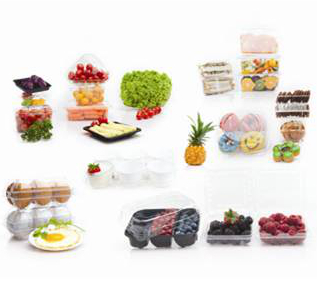The less complex each of these areas is, the greater the likelihood true traceability will be achieved. The global consumption of PET packaging is predicted to grow to almost 19.1 million tons by 2017 with a value of $57 billion, according to UK-based consultancy PIRA International. This growth is attributable to the durability, strength, and visual appeal of PET that results in its frequent selection for diverse food and beverage packaging applications. Today, however, newer and stricter legislation regarding food contact has become an issue of importance for users of PET.
The global consumption of PET packaging is predicted to grow to almost 19.1 million tons by 2017 with a value of $57 billion, according to UK-based consultancy PIRA International. This growth is attributable to the durability, strength, and visual appeal of PET that results in its frequent selection for diverse food and beverage packaging applications. Today, however, newer and stricter legislation regarding food contact has become an issue of importance for users of PET.
Most packaging manufacturers now implement quality assurance and hygiene programs to prevent the occurrence of contaminated or defective products reaching the consumer. These traceability programs improve quality assurance and internal controls and keep a spotlight on food safety. With this in mind, effective traceability should provide thermoformers and their customers with a complete picture of material origin and how it was stored, conveyed, dried, blended and processed; by which machine, under what conditions and the date-of-completion for every batch of PET sheet.
Today, converters ensure that daily production records are created then transferred into outgoing information databases that follow products to their destinations. Information included should comply with each certification standard by which the company or the company’s customer adheres to, such as ISO, BRC or even the end users’ specific requirements.
Tracing these key identifiers for thermoformers can be straightforward or very complex, depending on how the system is implemented. Obviously, the less complex the manufacturing system of the PET sheet, the easier to trace the process back to find answers to questions as they arise – this is especially important in the arena of food safety.
For example, extrusion of APET sheet reflects a traditional manufacturing process that typically requires the use of granulated resin from a third-party supplier. While it is generally straightforward to obtain suitable documentation from most virgin resin suppliers, the “true” traceability of any post consumer recycled flake contained in the sheet becomes more opaque as recycling systems are numerous and varied in their processes and feedstocks.
William J. Barenberg, Jr., OCTAL’s (www.octal.com) chief operating officer, explains: “After delivery from a typical PET resin supplier, resin will need to be dried in a four-to-six hour operation before being fed into the extruder. Anytime resin is transported and conveyed outside of its container, it is potentially exposed to contaminants.”
To eliminate some of the risks to true traceability, thermoformers can now look at today’s new, unique direct-to-sheet process (DPET™) from OCTAL that eliminates five stages of the conventional sheet production process (pelletizer, SSP, compactor, dryer and extruder). When the PET melt arrives at the calendar stack heated to the proper temperature, it has not once been exposed to the atmosphere nor endured the hazards of transport.
“Thermoformers should note that this means there is no chance for contamination to enter the system. It ensures a finished sheet that is fully devoid of moisture, thus thermoformers benefit from an elimination of all moisture defects. There is absolute traceability as the resin is constrained to one source.
“Food processors and packers can now be assured of product purity,” says Barenberg.
Any food packaging thermoformer seeking suppliers whose traceability documentation is easy to work with should examine the differences in manufacturing processes of PET sheet. There are two key areas to evaluate: the resin supply itself, and the manufacturing process of the sheet producer.

